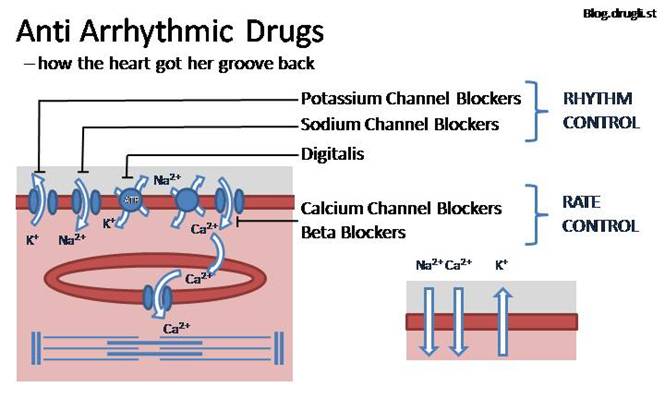Cardiovascular drugs – Antiarrhythmics
Cardiovascular drugs – Antiarrhythmics

Disopyramide
Disopyramide is used for the prevention and control of a wide variety of cardiac arrhythmias. At least two case reports have described the development of impotence but with no loss of sexual desire in patients on disopyramide.
One patient developed impotence on a dose of 300^400 mg disopyramide. At this time plasma disopyramide concentration was14|ug/ml. The dosage was reduced and full recovery of sexual function occurred when the plasma concentration fell to 3 jug/ml. In another case, impotence developed in a 35-year-old man within 3 weeks of commencing disopyramide.
Six days after withdrawal of the drug, sexual potency returned. Disopyramide was later recommenced because of a recurrence of his ectopic beats and the sexual dysfunction returned. Both authors suggest that the mechanism of impotence is via the anticholinergic action of disopyramide causing interference with parasympathetic sacral outflow.
Verapamil
Verapamil is a calcium-channel blocker used in the treatment of arrhythmia, angina and mild to moderate hypertension.
Amiodarone
Amiodarone prolongs the action potential duration in both atrial and ventricular myocardium. Few data are available on this drug. In a study of plasma and red blood cell amiodarone concentrations in 28 patients, it is incidentally mentioned that nine of the patients experienced one or more adverse side effects including anorexia, nausea, marked muscle weakness, unsteady gait and impotence. No further details are given. In the drug data sheet epididymo orchitis is mentioned as an occasionally reported unwanted effect. The reasons for this effect are unclear.
Digoxin
Digoxin is a cardiac glycoside that both increases the force of myocardial contractility and reduces myocardial conductivity. Oestrogen-like side effects can occur. The data sheet describes gynaecomastia after long-term
administration. In a study of cardiac patients, plasma oestradiol levels were higher and testosterone and LH levels lower in those patients taking digoxin for more than 2 years compared with non-treated control patients.
Furthermore, the treated men had a higher incidence of erectile difficulties and a lower frequency of sexual intercourse than untreated controls. The severity of cardiac disease (which in itself can alter sexual function) was comparable in the two groups. The authors suggest that digoxin or one of its metabolites may have an oestrogenic action on target tissues. Alternatively, it may stimulate the pituitary-adrenal axis to produce more oestrogen. These data are compatible with the hypothesis that the raised oestrogen suppresses pituitary LH by negative feedback and this could lead to hypogonadism and sexual dysfunction.






